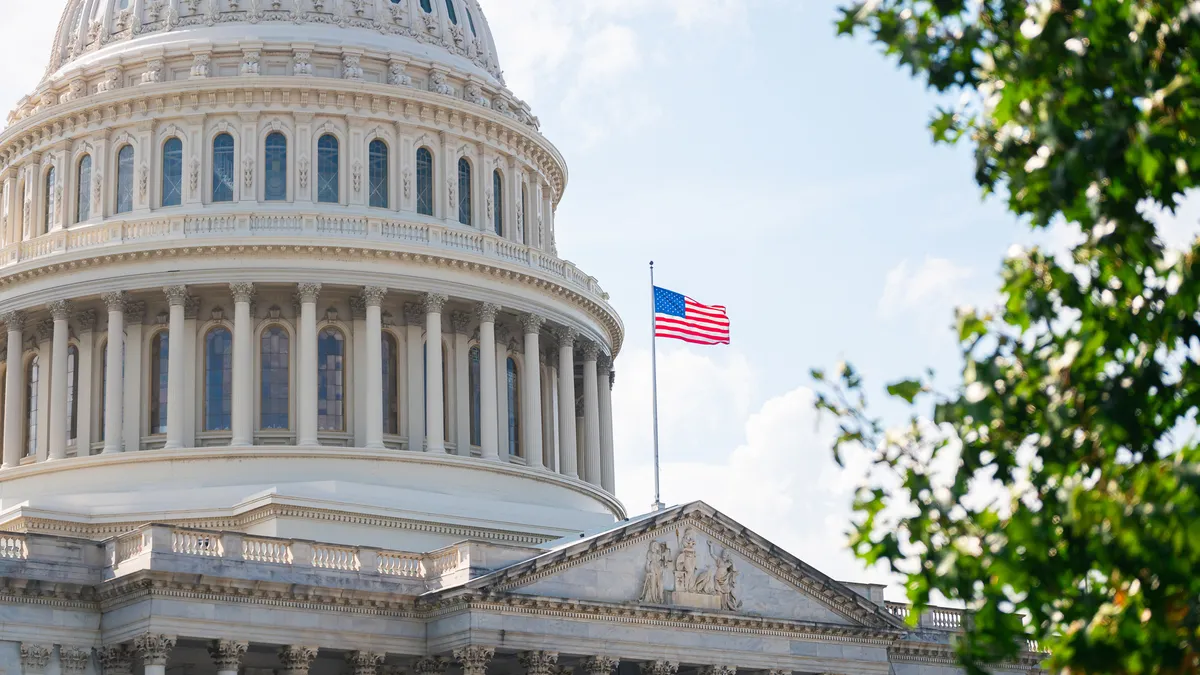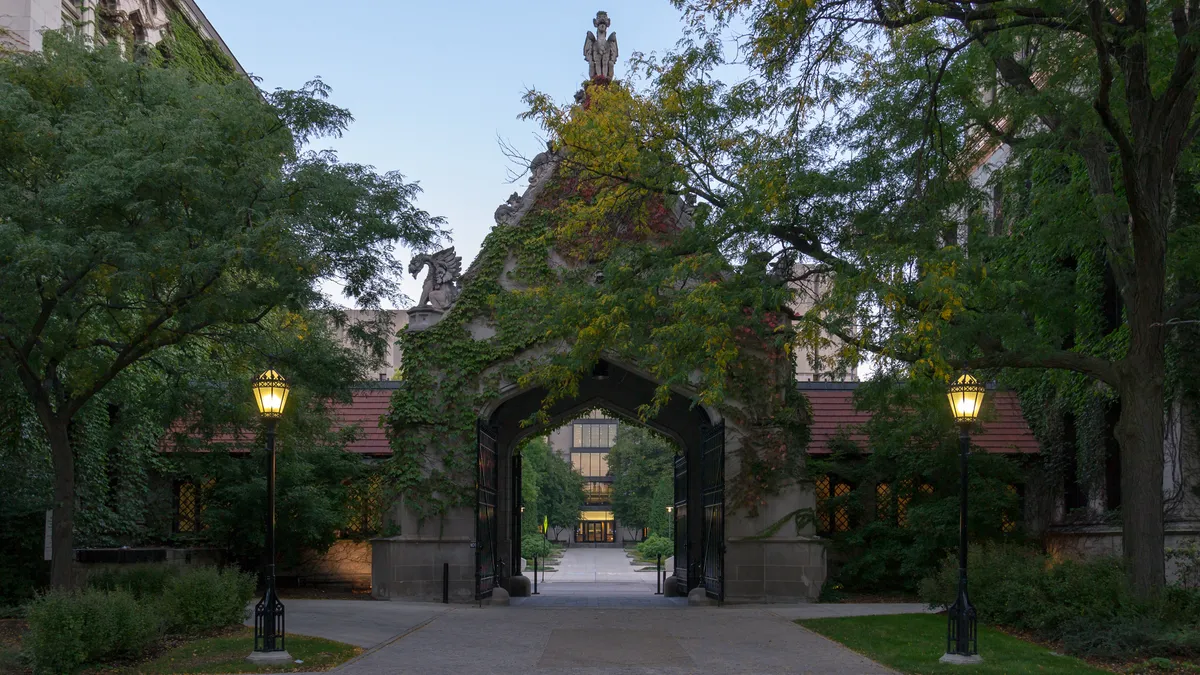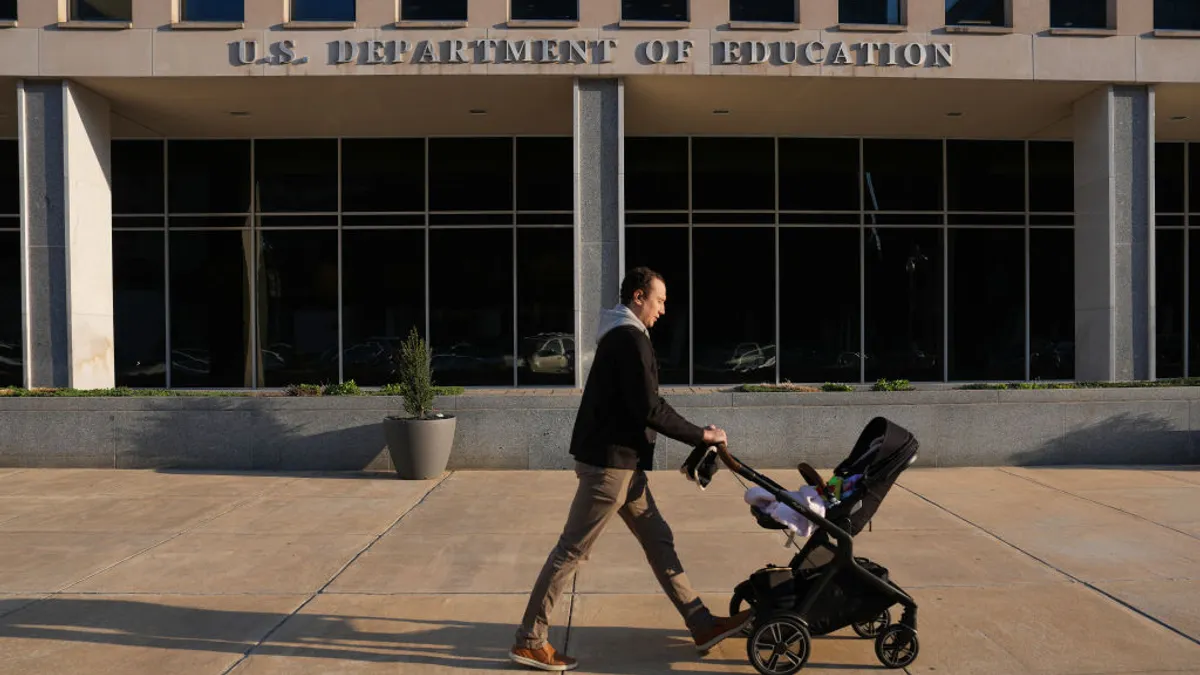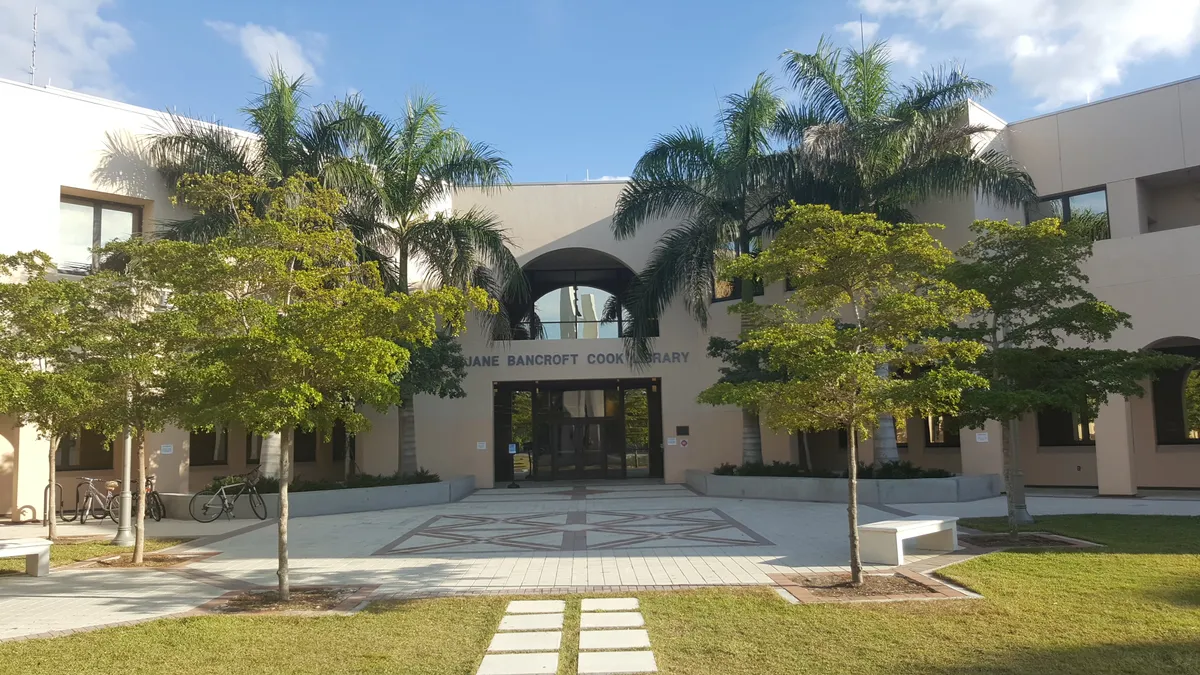When Republicans introduced the College Cost Reduction Act in early 2024, they partly aimed to ensure colleges had “skin in the game” by “holding them financially responsible when they charge too much for degrees that leave students with debt they can’t afford.”
That was according to a fact sheet posted by the House Committee on Education and Workforce, then led by North Carolina Republican Virginia Foxx. The linchpin to the CCRA’s efforts to give colleges “skin in the game” was a risk-sharing measure that would make institutions pay the federal government if too many of their former students had unpaid federal loans.
While the CCRA had little chance of passing under the Biden administration, Republicans have resurrected many of its key proposals. In April, the House Committee on Education and Workforce moved to advance a wide-ranging higher education bill that included the CCRA’s risk-sharing measure as part of the budget reconciliation process, which lawmakers are using in an effort to pass Republican spending priorities, such as continuing tax cuts enacted in 2017.
Backers of risk-sharing plans say they incentivize colleges to contain costs for students while working harder to ensure students who graduate can land good jobs.
Critics, meanwhile, worry that institutions — looking to hedge their own risks — might take on fewer students from low-income and historically marginalized backgrounds who face systemic challenges both in higher education and the job market.
“Risk-sharing is an example of a policy that could be potentially well-intentioned, because we all want to make sure that colleges are making sure costs are low for their students,” said Jordan Nellums, senior policy associate with The Century Foundation, a left-leaning think tank.
However, Nellums said, “In terms of its implementation, it would be disastrous for institutions that are doing the job of bringing on students that come from communities that are already underrepresented.”
A ‘misalignment’ of incentives?
The idea of making colleges shoulder some risk for student loans has been around for years.
When the Brookings Institution’s Hamilton Project put forward a risk-sharing proposal in 2017, it pointed to what the authors called a “misalignment of schools’ incentives with those of students and taxpayers.”
The authors proposed that colleges reimburse the government based on loan repayment rates of student loan cohorts.
At the same time, the proposal also called for using some of that revenue to incentivize institutions that successfully serve low-income students, who, the authors noted, “disproportionately attend low-repayment institutions, rely more on loans to finance their educations, and are less able to rely on their families for help with loan repayment.”
The House committee’s sweeping higher ed bill contains a version of such an offset, called a Promise grant. A bill summary said the grants would reward colleges for enrolling and graduating low-income students, though institutions must also show relatively strong graduate earnings and low tuition rates to receive the funding.
The grants would be funded by colleges’ risk-sharing payments, which would also go toward covering a portion of unpaid loans of their former students. Colleges would face penalties for paying late, including the eventual loss of federal student aid eligibility.
"The breadth of the proposal to empower the federal government to take funds from some institutions to then redistribute to other institutions who are the decided ‘winners’ under a complex formula is astonishing in its reach."

Ted Mitchell
President, American Council on Education
In an April 29 letter to Education and Workforce Committee Chair Tim Walberg, American Council on Education President Ted Mitchell had sharp words for the risk-sharing proposal approved by the committee.
“The breadth of the proposal to empower the federal government to take funds from some institutions to then redistribute to other institutions who are the decided ‘winners’ under a complex formula is astonishing in its reach,” Mitchell wrote.
The net losses for institutions
The risk-sharing plan could land hard on many colleges that focus on underserved students. Even with the Promise grants or similar offsets, the financial burden is likely to be heavy.
Looking at a data set of about 3,750 institutions from the Education and Workforce committee, ACE found last fall that 3,681 colleges — 98% — would make payments under the Republicans’ risk-sharing system, with a median payment of about $153,000.
Even with Promise grants, 75% of institutions would see a net loss. ACE calculated a median net loss of nearly $169,000.
For colleges that serve large numbers of low-income and historically marginalized students, the numbers are starker.
ACE found that of hundreds of institutions with 70% or more of students receiving Pell Grants, 96% would make payments under the risk-sharing policy and 91% would face a net loss. The median net loss for that group was about $107,000.
Many historically Black colleges and universities would fare even worse. In ACE analysis of the House committee’s data, 77% would be liable for paying the government. Well over half — 63% — would be in the red even after Promise grants, with a median net loss of just over $300,000.
Those figures assume Promise grants would ease the burden. However, the reconciliation process is complex and involves much political and fiscal jockeying, and it is made even more uncertain when factoring in the Senate’s role in passing any eventual bill. There is at least a possibility all of that could threaten what offsets the risk-sharing proposal offers, which would add to the burden for colleges.
"We fear that it's possible that institutions who enroll more low-income students, more first-generation students, may be disincentivized from enrolling those students."

Liz Clark
Vice president for policy and research, National Association of College and University Business Officers
Reconciliation allows the Senate to pass spending-related policies with a simple majority, avoiding a filibuster that would take 60 votes to break. The process requires that bills don’t raise deficits beyond a window, usually 10 years, meaning that new spending or tax cuts have to be offset with savings or additional revenue.
“If you simply eliminated [Promise grants], you increase the amount of savings overall — and we know they're going to be scraping for savings,” Jon Fansmith, senior vice president of government relations and national engagement at ACE, said in an interview earlier this year.
That means risk-sharing payments wouldn't even be partially offset for colleges that hold down costs and enroll large shares of students from groups that have been historically disadvantaged in the post-college job market.
“In the carrot and stick approach, it's a baby carrot and a giant stick,” Fansmith said. “But they might discard the baby carrot entirely too.”
‘Handcuffing’ institutions
Higher education experts worry risk-sharing would effectively penalize institutions for serving populations that historically have lacked access to higher education and the same workforce opportunities as their wealthier or White counterparts.
Risk-sharing proposals “are not designed to address things like systemic discrimination in the workforce,” Fansmith said. “They're not designed to address variations that are really impactful in terms of earnings and outcome and employment.”
With students from these groups facing more obstacles to loan repayment, colleges could pay the price for enrolling them under risk-sharing policies.
“We fear that it's possible that institutions who enroll more low-income students, more first-generation students, may be disincentivized from enrolling those students, and so we think there are some inherent problems with this plan,” Liz Clark, vice president for policy and research at the National Association of College and University Business Officers, said in a February interview.
Many HBCUs and other minority-serving institutions are already struggling with financial constraints without the added cost of paying the government.
“There are some maybe wealthier institutions that would be okay, but that is not the case for HBCUs, predominantly Black institutions and community colleges,” Denise Smith deputy director of higher education policy and senior fellow at The Century Foundation, said in a March interview.
And if institutions can’t pay the government, they could lose access to federal Title IV loan and grant programs — “further hindering and handcuffing an institution from being able to operate,” she added.
Data and administrative challenges
And then there are the data collection and administrative difficulties, both for colleges and government, in implementing risk-sharing.
“There are some maybe wealthier institutions that would be okay, but that is not the case for HBCUs, predominantly Black institutions and community colleges.”

Denise Smith
Deputy director of higher education policy, The Century Foundation
Speaking in February about the CCRA’s risk-sharing plan that the reconciliation bill adopted, Fansmith noted it would require complicated payment calculations based on multiple streams of data, which are housed in separate governmental siloes.
“Income data is held by the IRS, borrowing data is held by the Department of Education, program participation is held by the institutions and reported to the department,” he said.
In Fansmith’s view, the calculations are problematic because they're based on a set of students that don't represent the entire population of college students. A risk-sharing proposal like this only looks at the outcomes of students within the federal financial system to determine whether colleges make payments.
“You're then only talking about two-thirds of students,” Fansmith said. “They also will be the two-thirds of students who have the greatest financial need, which means their outcomes — and this is the way our society works — will not likely be as good as those students who don't have demonstrated financial needs.”
Risk-sharing’s successful implementation also presupposes a functioning bureaucracy. Experts say that could be jeopardized by massive staff cuts at the U.S. Department of Education and President Donald Trump’s promise to wind the agency down.
“This is a very complicated payment structure, which I think is really ironic,” Jason Delisle, a senior nonresident fellow with the Urban Institute and former Republican congressional staffer, noted during an American Council on Education panel in Washington, D.C., in February.
“Half the Republicans in this town are talking about dismantling the Department of Education,” Delisle added. “Meanwhile, legislators have big new plans for the Department of Education to run this risk-sharing system. I mean, who's going to do it?”
But the burden doesn’t just fall on the government. Risk-sharing creates administrative costs for institutions as well.
Smith noted that the CCRA version put the onus largely on institutions to track outstanding debt obligations and report the number accurately to the Education Department for the purpose of calculating their risk-sharing payments.
“This is putting burdens on institutions that already are understaffed or under-resourced to have to figure this out,” Smith said.






















